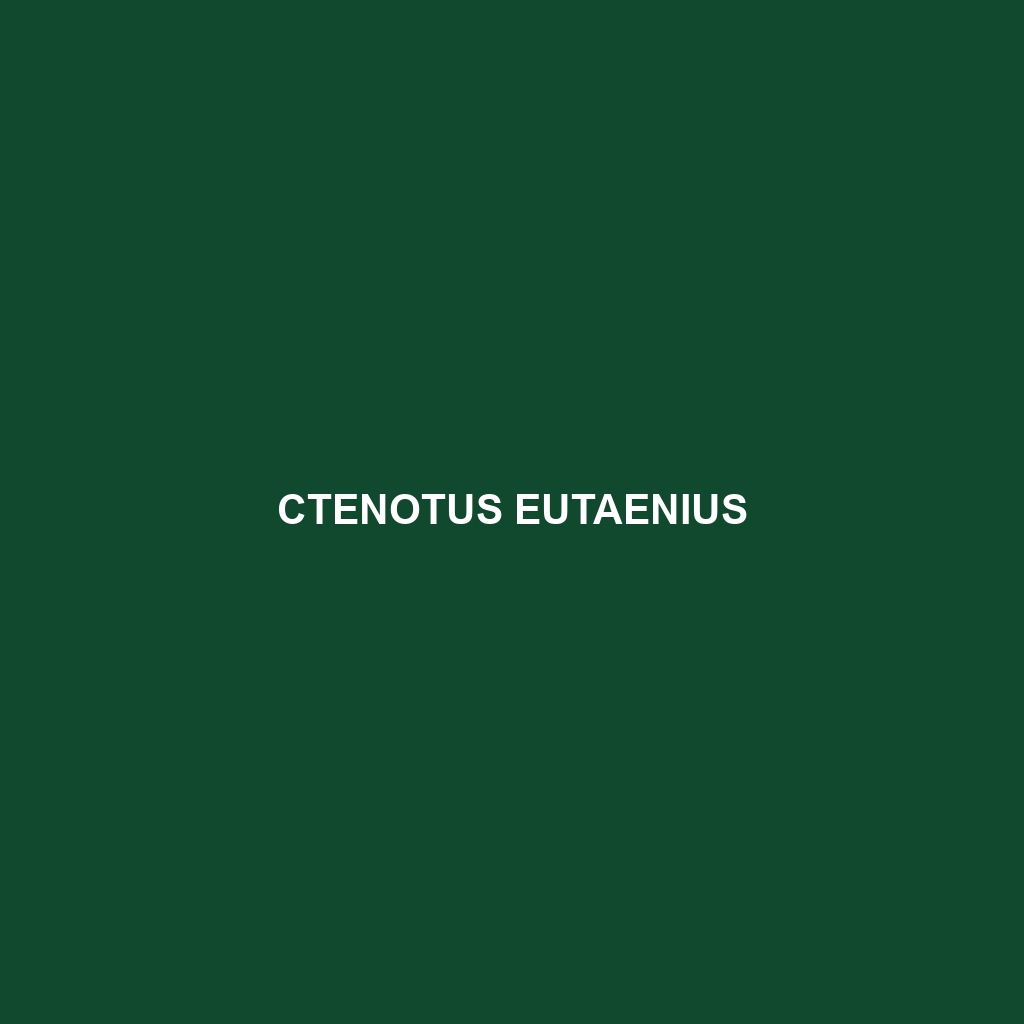Ctenotus olympicus, commonly found in the arid regions of eastern Australia, is a diurnal skink recognized for its elongated body, distinctive dark stripes, and agile movements. This species plays a vital role in its ecosystem by controlling insect populations and serving as prey for larger animals.
Tag: Ctenotus species
Ctenotus monticola
Discover the Ctenotus monticola, or mountain skink, a small, agile skink native to southeastern Australia, known for its distinctive earthy tones and unique tail-shedding defense mechanism. This diurnal insectivore plays a crucial role in controlling insect populations while thriving in rocky outcrops and grassy woodlands.
Ctenotus labillardieri
Discover the Eastern Sand Skink (Ctenotus labillardieri), a burrowing lizard native to southeastern Australia, known for its sandy brown to olive-green coloration and diurnal behavior. This adaptable species thrives in arid environments, playing a crucial role in controlling insect populations while exhibiting remarkable tail regeneration.
Ctenotus gagudju
Discover the Ctenotus gagudju, a slender skink native to northern Australia, thriving in arid habitats with a diet primarily consisting of insects. With its impressive adaptability, distinctive coloration, and agile movements, this fascinating species plays a vital role in maintaining ecological balance.
Ctenotus eutaenius
Discover the Ctenotus eutaenius, a medium-sized lizard found in the dry sclerophyll forests of southeastern Australia. Known for its distinctive brown and grey scales, agile movements, and diet consisting mainly of insects, this fascinating species plays a vital role in its ecosystem.</p>
Ctenotus essingtonii
Ctenotus essingtonii, commonly known as the Essington Skink, is a medium-sized lizard found in northern Australia's arid regions, characterized by its slender body, vibrant yellow or orange stripes, and diurnal behavior. This resilient species primarily feeds on insects and plays a critical role in its ecosystem as both predator and prey.
Ctenotus catenifer
Discover the Ctenotus catenifer, or striped ctenotus, a slender lizard native to southeastern Australia, characterized by its distinctive stripes and agile movements. This diurnal predator thrives in grasslands and woodlands, primarily feeding on insects while playing a crucial role in maintaining ecological balance.
Ctenotus brooksi
Ctenotus brooksi, commonly known as Brook's Ctenotus, is a medium-sized skink native to arid regions of southern Australia, thriving in open woodlands and grasslands. This agile, insectivorous species showcases sandy-brown to greyish coloration with distinctive stripes, plays a crucial ecological role by controlling insect populations, and exhibits remarkable adaptability to varying environmental conditions.
Ctenotus brevipes
Ctenotus brevipes is a diurnal lizard native to the arid regions of Australia, known for its agility and distinctive brown and grey coloration with dark stripes. This insectivorous species thrives in sandy grasslands and plays a vital role in maintaining ecological balance by controlling insect populations.
Ctenotus astictus
Discover the Ctenotus astictus, a small Australian skink renowned for its distinctive brown, gray, and cream patterned body, reaching lengths of 8 to 12 centimeters. This agile, diurnal species thrives in arid woodlands, preying primarily on insects while playing a crucial role in its ecosystem as both predator and prey.









